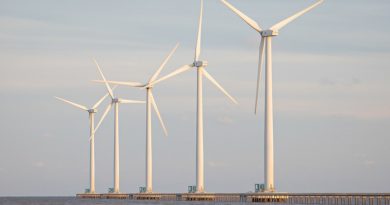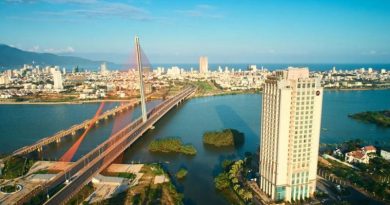Vietnam ramps up efforts to build more LNG facilities
As more attention is paid to liquefied natural gas (LNG) as another fuel option needed for power generation under Vietnam’s most recent Power Development Plan (PDP), which is currently being developed, the need for building LNG facilities is more imperative than ever.
In the new Power Development Plan (PDP) 7 that covers the 2025-2030 period, Vietnam will need new LNG to power facilities with a total capacity of approximately 15,000-19,000MW to meet the rapid growth in electricity power demand, mostly in the southern part of the country.
According to the Master Plan for Vietnam’s Gas Industry Development to 2025, the country needs to build more new facilities to accommodate imported LNG, which is expected to reach 1-4 billion cubic metres per year in 2021-2025 and approximately 6-10 billion cu.m per year in 2026-2035. Most of the imported LNG will be used for electricity generation, fuelling the country’s socioeconomic development.
Angelin Energy is one of several promising new players in Vietnam’s fledgling LNG sector. This ambitious Ho Chi Minh City-based company is pushing for greater LNG use in the country and already has several strategic partnerships in place, including Japan Petroleum Exploration Co., Ltd. (JAPEX) which has over 36 years in the LNG business and over 65 years in the international oil and gas business.
Bui Thi Hong Van, managing director of Angelin Energy recently highlighted four reasons why the Vietnamese government is paying close attention to LNG.
First, LNG, is the cleanest burning of all hydrocarbons, and as such has a less negative impact on the environment. According to a report “LNG: An Energy of the Future” published on elengy.com, a thermal power plant fuelled by LNG rather than coal emits 81 per cent less carbon dioxide (CO2), 8 per cent less nitrogen oxide (NOx), and 100 per cent less sulfur (SO2) and fine particles. The report shows that if coal-fired power plants were replaced by thermal power plants fueled by natural gas, the CO2 emissions of the European energy sector would be reduced by 60 per cent, and 20 per cent globally.
Second, Qatar, Australia, the United States, Russia and a growing list of others are the world’s main LNG producers. As such, it does not depend on the quantity of gas ore in Vietnam. Also, the amount of electricity generated from natural gas is not only stable but also easy to control without reliance on natural power like solar and wind energy.
Furthermore, once solar and wind reach economies of scale in the future and more technological development, LNG can also serve as backup fuel for power plants when wind and solar becomes unstable during non-windy or non-sunny days.
Third, a 2019 International Group of Liquefied Natural Gas Importers (GIIGNL) report indicated that Asia accounted for the world’s largest share of LNG consumption, at 240 million tonnes, around 70 per cent of the global market share. Thus, there is no shortage of supply or any increasing shipping costs to Vietnam due to disruptions in trade flow.
Van stressed that LNG is mainly used in power plants and industrial parks housing businesses in need of gas.
The main hurdle currently is the lack of LNG storage warehouses and gas power plants. However, Vietnam has attracted more than 10 local and foreign investors who want to develop such receiving terminals, storage tanks, and power plants, including PV Gas, Hai Linh, America-based AES Corporation, Japan’s Marubeni Corporation, DOE Singapore, Gen X Energy, GENCO3, and others. Among them, Hai Linh and PVGas are building an LNG storage warehouse in Ba Ria-Vung Tau.
For tenants in industrial parks, LNG will be delivered by LNG Trailer or ISO tank container trucks to factories after it is shipped to the ports.
“In general, the infrastructure facilities for LNG are being set up in Vietnam, which will gradually solve the storage and transport problems,” Van added.
Source: Vir.com.vn









